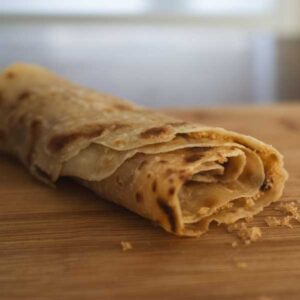
Lefse is more than just a recipe; it’s a labor of love and a cherished tradition in many homes, especially during the holidays. This soft, potato-based Norwegian flatbread has been passed down through generations, and today, I’m sharing my family’s tried-and-true recipe with you. Whether you’re a seasoned lefse maker or a first-timer, this guide will walk you through the process step-by-step.
For those short on time, I also have a shortcut lefse recipe. While it may not follow the traditional process, it’s still absolutely delicious and a great option for busy schedules!
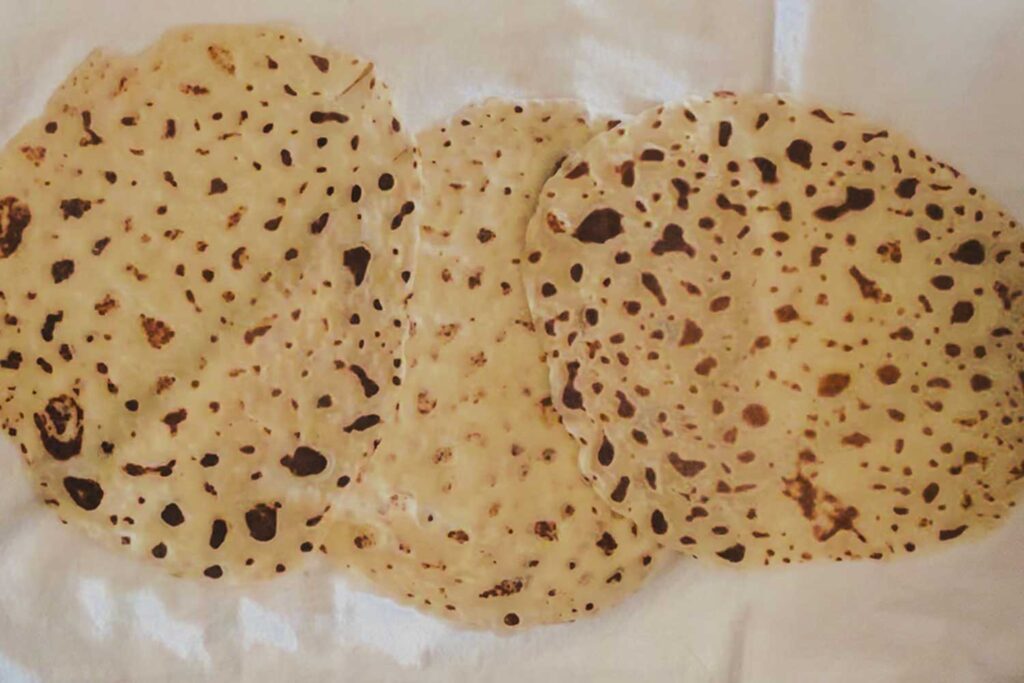
Watch the Step-by-Step Lefse Recipe Walkthrough
If you’re feeling overwhelmed or just want to see the process in action, I’ve got you covered! I created a detailed YouTube video where I walk through every step of making traditional lefse, from prepping the potatoes on Day 1 to rolling and cooking on Day 2.
In the video, I share practical tips, demonstrate the rolling technique, and show how to use the specialty tools like the lefse stick and griddle. Whether you’re a visual learner or just want some extra encouragement, this video will help you feel confident and excited to make your own lefse at home.
What You’ll See in the Video:
- The exact technique for ricing and preparing the potatoes.
- How to roll the dough thin enough to get that perfect, delicate texture.
- Tricks for using the lefse stick to transfer dough without tearing.
- The best way to cool, store, and serve your lefse for ultimate freshness.
After watching, you’ll have all the knowledge you need to create this delicious flatbread from scratch. Don’t forget to like the video, subscribe to my channel for more recipes, and leave a comment letting me know how your lefse turns out!
What is Lefse?
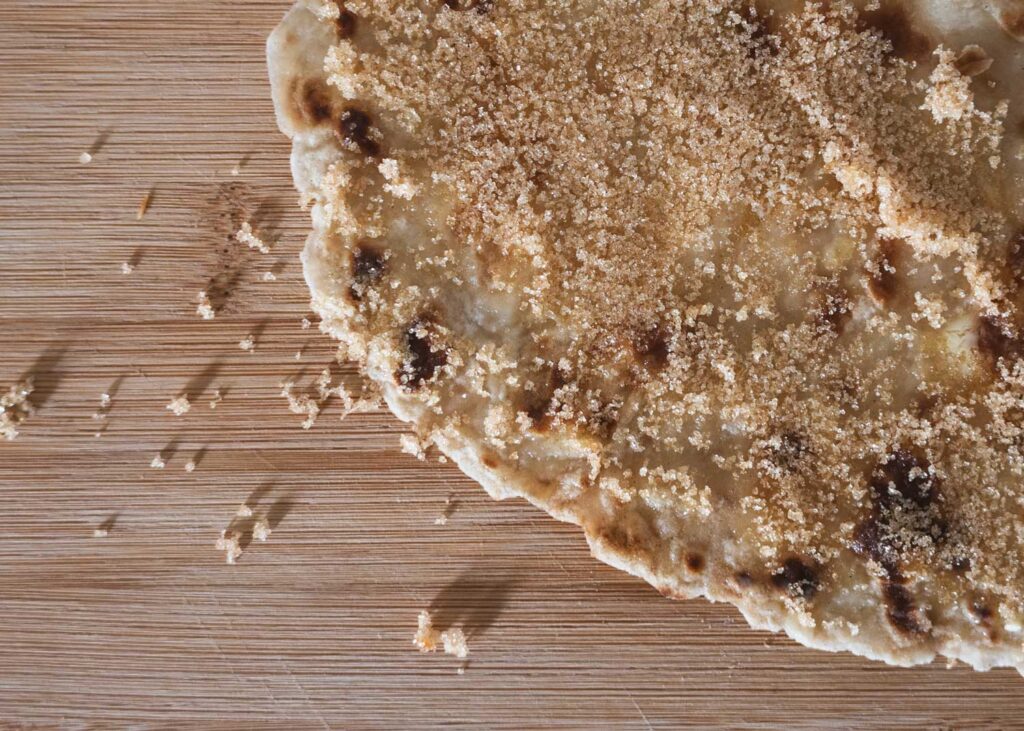
Lefse is a Norwegian flatbread made primarily from potatoes. It’s soft, thin, and versatile—perfect as a snack, dessert, or even a savory base for sandwiches. Traditionally, lefse is served warm, spread with butter, and sprinkled with sugar, but you can customize it with your favorite toppings like jam or even cream cheese.
Equipment You’ll Need
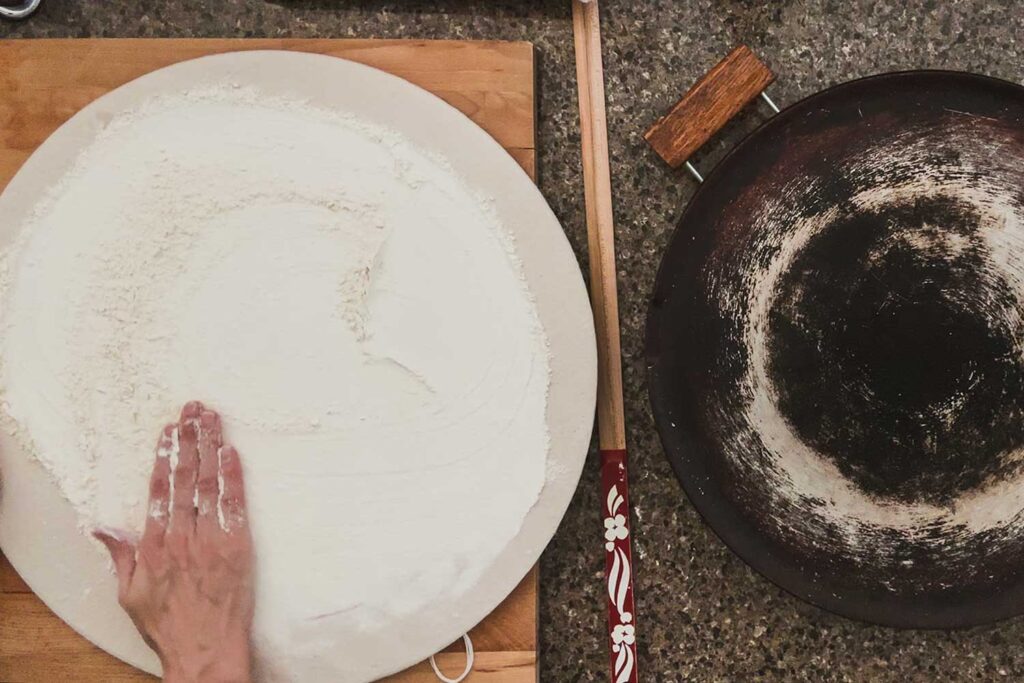
Making traditional lefse requires a few specialty tools to ensure success. Here’s what you’ll need:
- Potato Ricer: For smooth, lump-free potatoes.
- Digital Scale: For measuring out your lefse portions evenly.
- Stainless Steel Pans (9X13) with lid: Perfect for storing potatoes and shaped lefse pucks.
- Lefse Grill: A Heritage griddle or similar works best.
- Lefse Turning Stick: To transfer the delicate dough onto the griddle.
- Rolling Pin Sock: Prevents the dough from sticking as you roll it out.
- Corrugated Lefse Rolling Pin: For getting that classic lefse texture and thin lefse.
Traditional Lefse Recipe
Day 1: Preparing the Potatoes
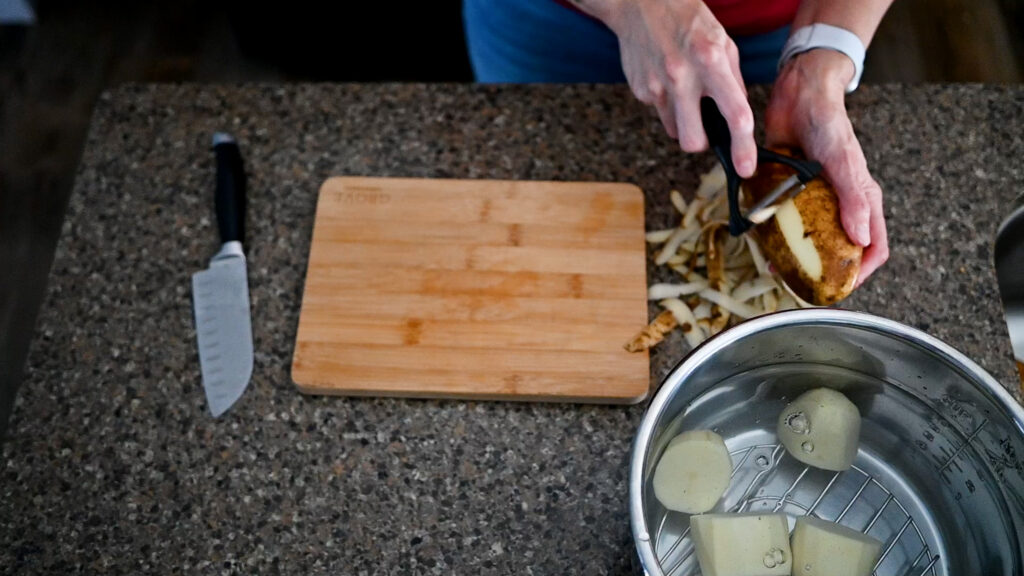
Ingredients:
- 5 lbs. Russet potatoes
- ½ cup butter
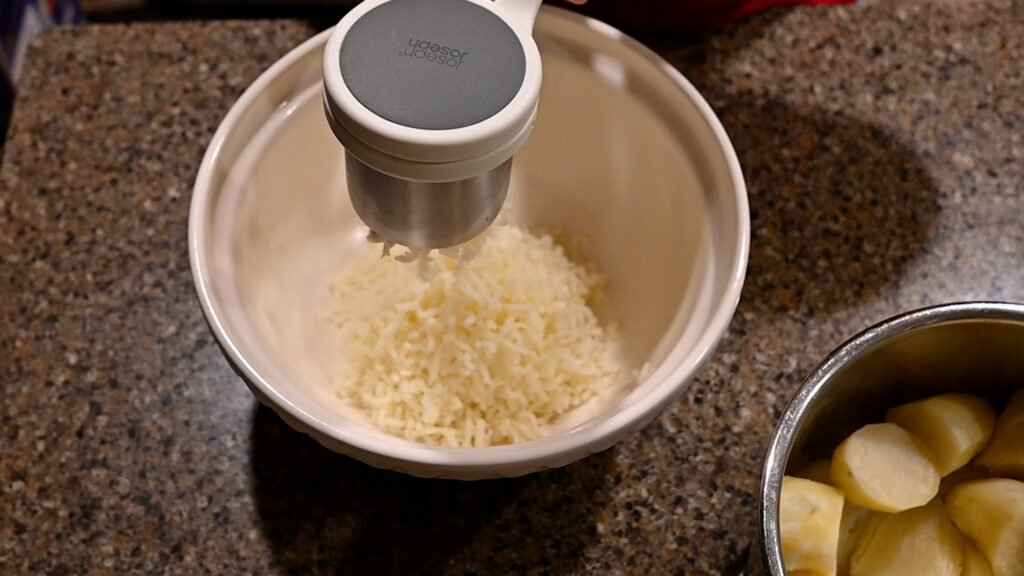
Instructions:
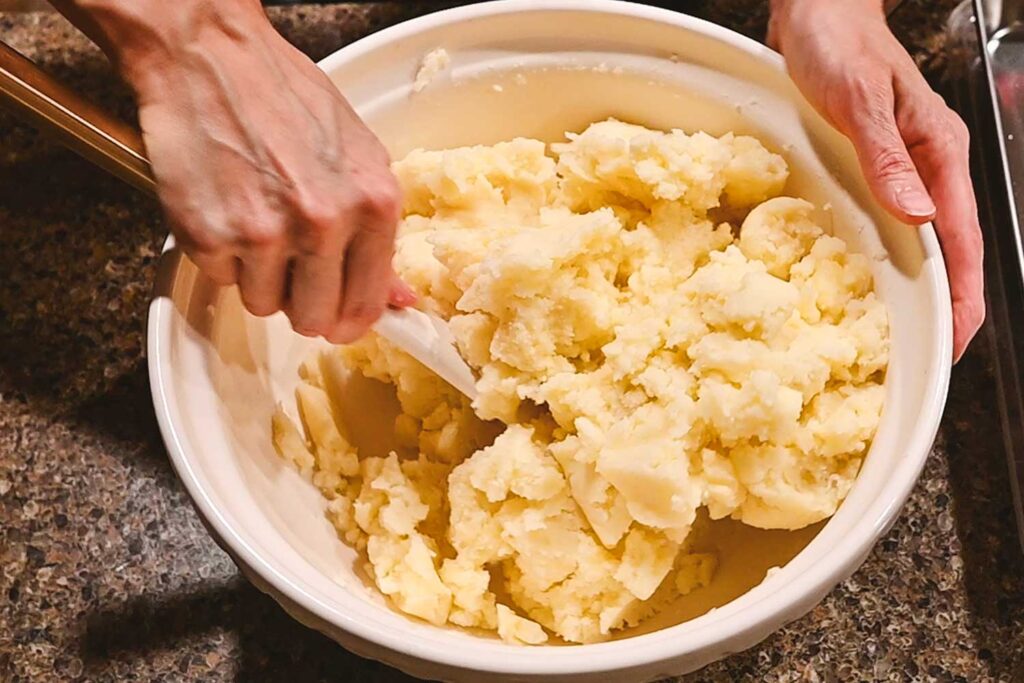
- Peel the potatoes, removing any eyes or dark spots.
- Dice and boil the potatoes until fork-tender, or use an Instant Pot (5 minutes on high pressure with a quick release).
- Rice the hot potatoes using a potato ricer for a smooth texture.
- Mix in the melted butter until fully incorporated.
- Pat the potatoes into a 9×13-inch pan and let them cool uncovered to release excess moisture.
- Refrigerate overnight, uncovered, to dry out the potatoes.
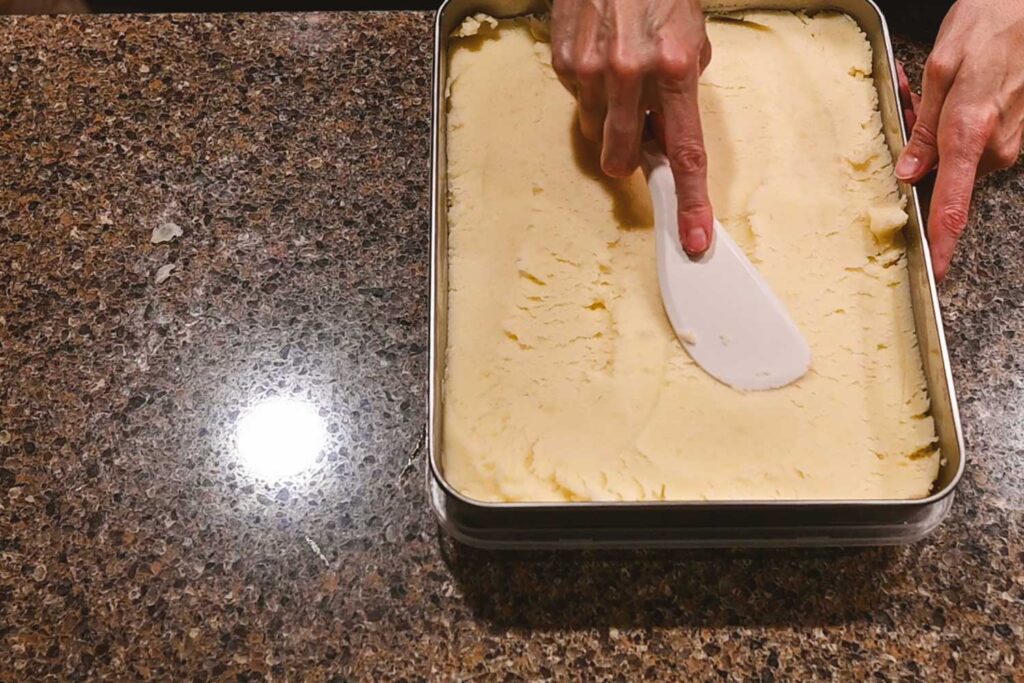
Day 2: Making the Dough
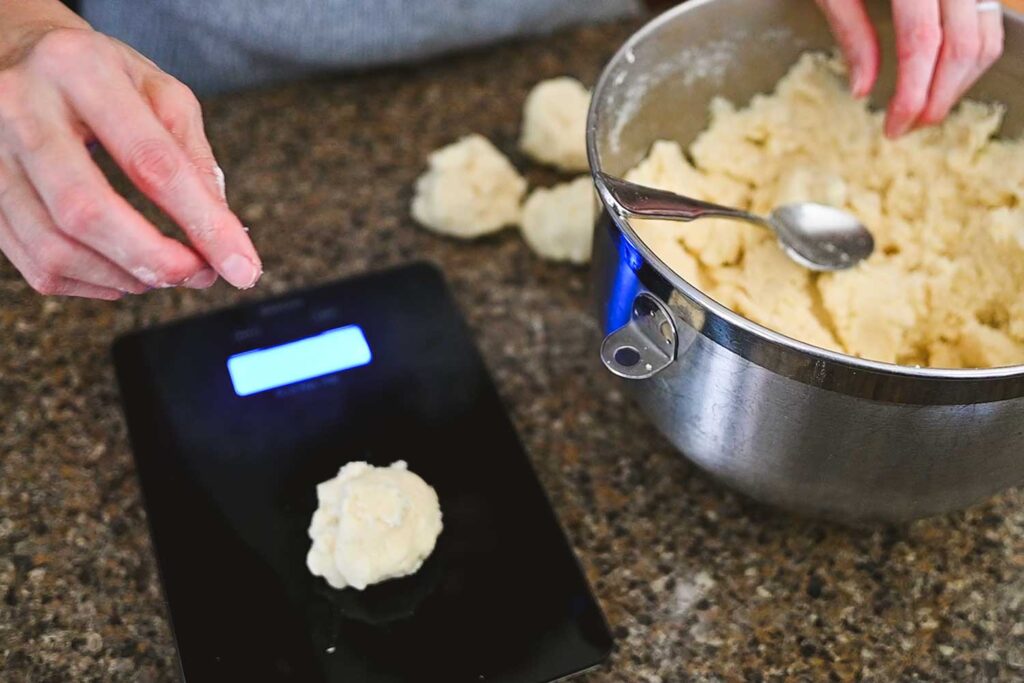
Ingredients:
- 1½ cups flour
- 2 tablespoons sugar
- 1 teaspoon salt
- ½ cup heavy cream
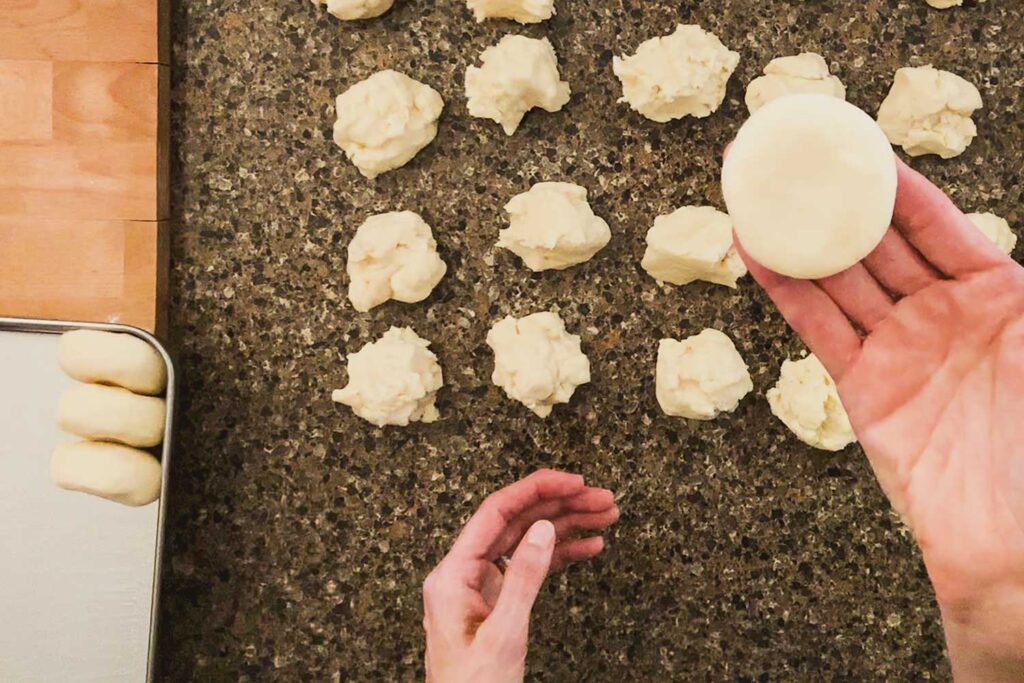
Instructions:
- Combine the cold, riced potatoes with flour, sugar, salt, and cream. Mix until smooth and dough-like. If the dough is sticky, add more flour one tablespoon at a time.
- Portion the dough into 60g balls. Knead each ball lightly, flatten into a puck, and smooth the edges to prevent tearing during rolling.
- Refrigerate the dough pucks while you prepare your rolling station and preheat the griddle to 400°F.

Rolling and Cooking Lefse
- Flour your pastry cloth and rolling pin thoroughly, rubbing the flour into the fibers to prevent sticking.
- Roll out one puck at a time, turning often to create a thin, round sheet. Aim for a thickness where you can see the print of the pastry cloth through the dough.
- Use a lefse stick to gently lift the dough onto the griddle. Cook for 45 seconds on one side, then flip and cook for another 30-45 seconds until light brown spots appear.
- Transfer the cooked lefse to a tea towel to cool in a single layer.
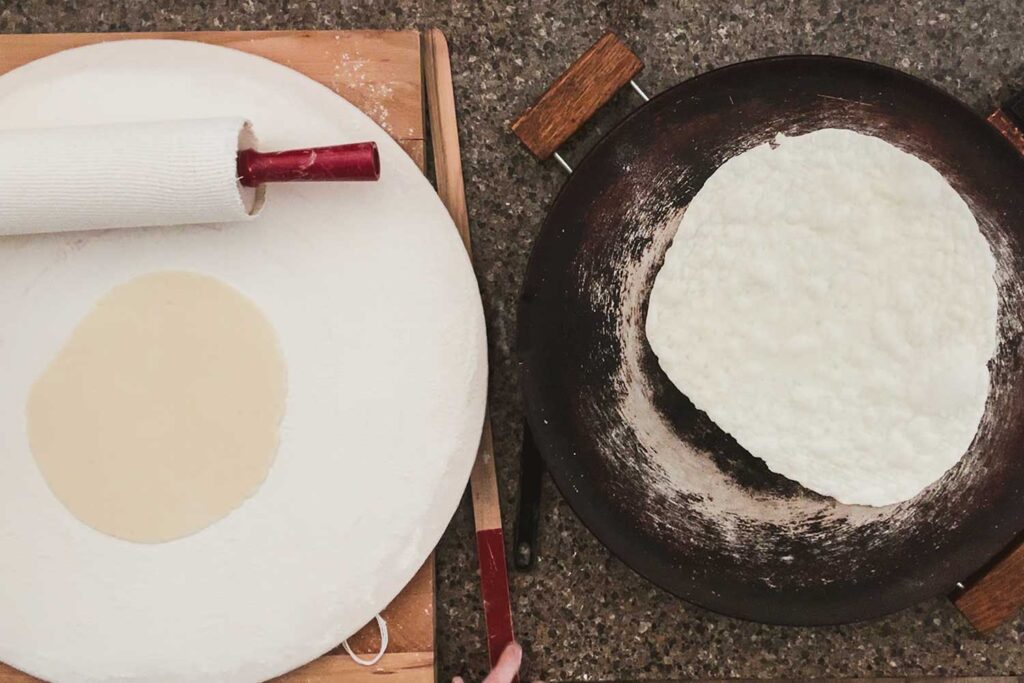
Tips for Success with this Lefse Recipe
Keep Dough Cool: Remove a few pucks of dough from the refrigerator at a time since the cold dough is easier to handle.
Flour Generously: Continuously add flour to the pastry cloth and rolling pin to avoid sticking.
Clean as You Go: If dough sticks to your board, scrape it off and re-flour the area before continuing. Also wipe any flour off your griddle as you go so the flour does not cook and burn onto the cooked lefse.
Use Two Tea Towels: One for cooling lefse in single layers and another for stacking once they’re cooled.
How to Serve Lefse
Lefse is best served warm. To heat, warm individual sheets of lefse in the microwave for 30 seconds and spread with butter and sprinkled with sugar. For a twist, try adding jam, cinnamon sugar, or even savory toppings like smoked salmon or cream cheese. It’s a versatile treat that can be enjoyed as a snack, dessert, or part of a meal.
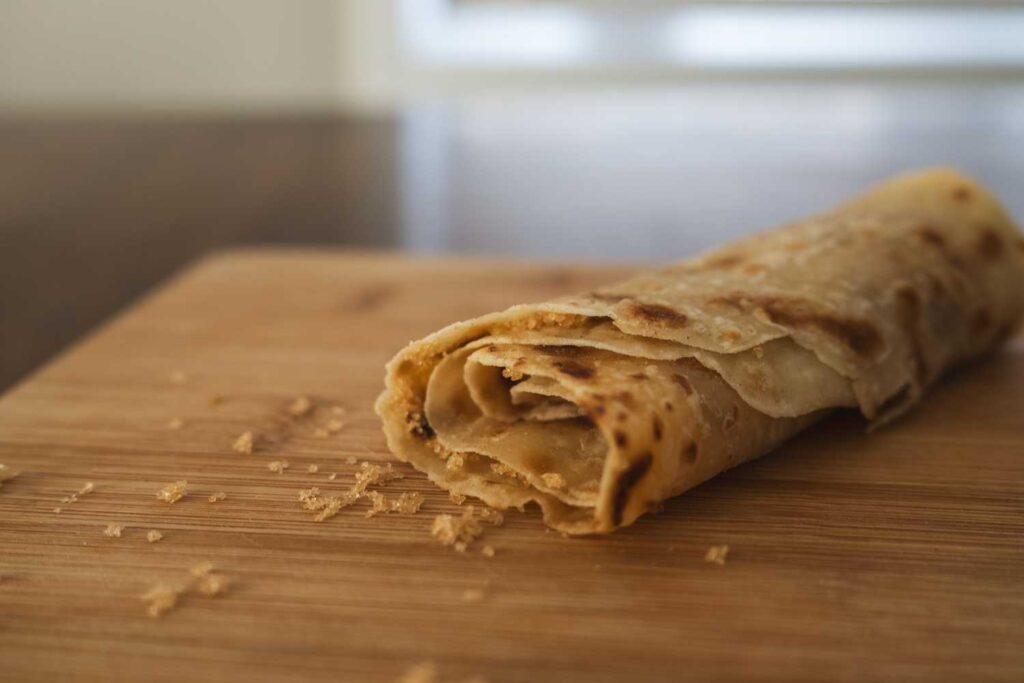
Storage Tips
Fold each lefse into quarters and stack 8 pieces per quart-sized freezer bag. Rotate the lefse as you stack to keep the outside edges in the center. They are more prone to drying out so this gives them an extra layer of protection.
Freeze any leftovers for up to 6 months. To defrost, simply remove your bag of lefse from the freezer and let it thaw on the counter for an hour or so. To reheat, simply warm them in a skillet or microwave for 30 seconds.
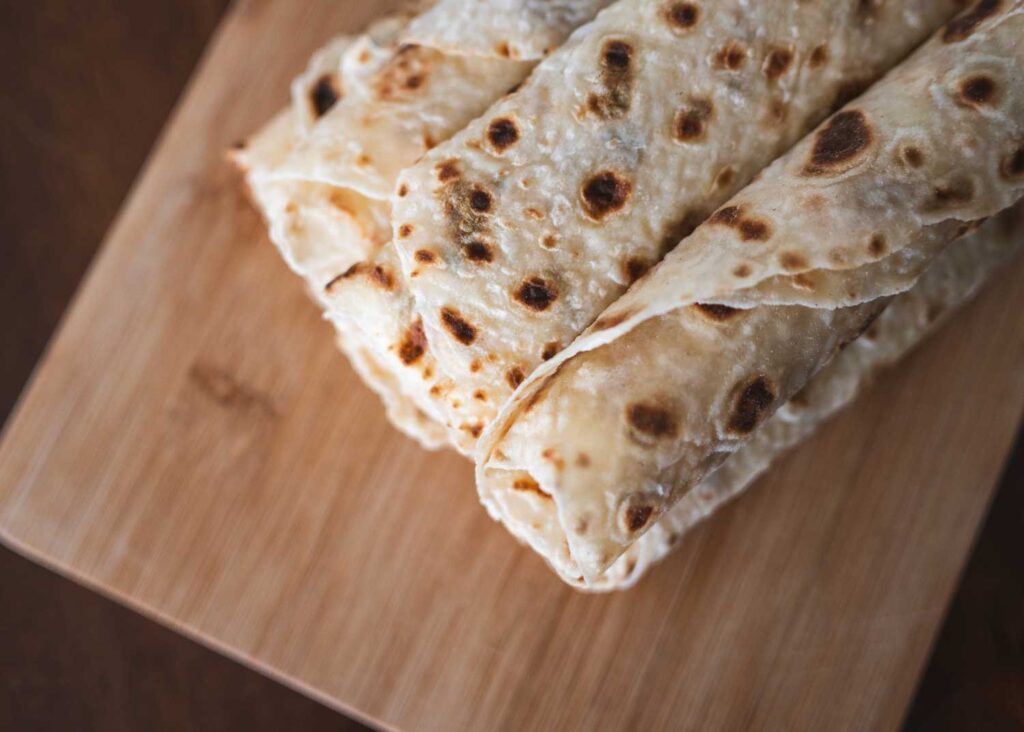
Shortcut Lefse Recipe
For those in a rush, I have a shortcut homemade lefse recipe that uses instant mashed potatoes and no overnight refrigeration is needed. It’s quicker but still delicious!

Preserving the Tradition
Making lefse is more than just cooking—it’s a tradition that brings people together. Whether you’re making it for the holidays or simply to enjoy with your family, lefse is a treat that’s worth the effort.
Have you made lefse before? Do you have any family traditions tied to this classic recipe? Share your stories in the comments, and don’t forget to pin this recipe for later. Happy lefse-making!

Traditional Norwegian Lefse
Ingredients
Day 1 Ingredients:
- 5 lbs. Russet potatoes
- ½ c. Butter
Day 2 Ingredients:
- 1½ c. Flour
- 2 Tbsp Granulated Sugar
- 1 tsp. Salt
- ½ c. Heavy cream
- Additional Flour for Rolling Lefse
Instructions
Day 1: Preparing the Potatoes
- Peel and dice 5 lbs. of Russet potatoes, removing any eyes or tough spots.
- Boil potatoes until fork-tender, or cook in an Instant Pot on high pressure for 5 minutes, then quick release.
- Rice the hot potatoes using a potato ricer.
- Mix ½ cup melted butter into the riced potatoes.
- Pat the mixture into a 9×13-inch pan and let cool uncovered.
- Refrigerate overnight, uncovered, to allow excess moisture to evaporate.
Day 2: Making the Dough and Cooking the Lefse
- Mix the cold, riced potatoes with 1½ cups flour, 2 tablespoons sugar, 1 teaspoon salt, and ½ cup heavy cream until smooth and playdough like consistency. Add more flour 1 tablespoon at a time to reach this consistency.
- Divide the dough into 60g balls. Knead each ball lightly, flatten into a puck, and smooth the edges. Refrigerate dough balls while setting up your equipment.
- Preheat a lefse griddle to 400°F. Flour your pastry cloth and rolling pin generously.
- Roll out one dough puck at a time into a thin circle, adding flour as needed to prevent sticking.
- Use a lefse stick to transfer the rolled dough to the griddle. Cook for 45 seconds on one side, then flip and cook for another 30-45 seconds, until light brown spots appear. Adjust grill heat to allow for even cooking.
- Cool cooked lefse on a tea towel in single layers. Once cool, stack and cover with another towel.
- Fold cooled lefse into quarters and store in freezer bags (8 per bag) or serve warm with butter, sugar, or your favorite toppings.

1 thought on “Easy & Delicious Traditional Lefse Recipe”